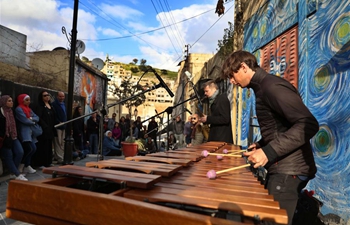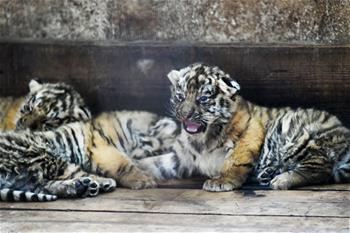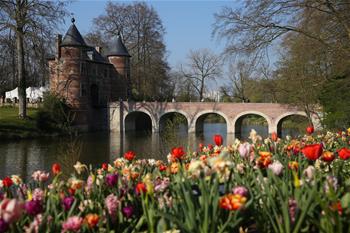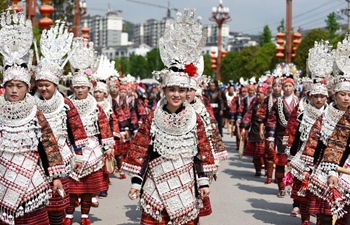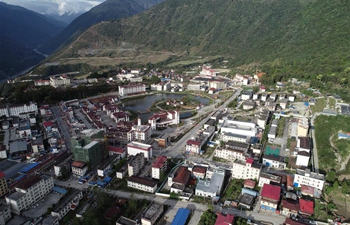CHUBUT, Argentina, April 20 (Xinhua) -- When autumn arrives at the southern end of South America, an imposing migrant gets poised. Having just spent a reproductive season there, Magellanic penguins will travel up to 6,000 km northwards to warmer waters off Brazil's coasts.
As the middle-sized penguins gathered at the 600-hectare Punta Tombo National Reserve in Argentina's southern province of Chubut, their favorite mating and nesting grounds, it attracts nature lovers.
Located more than 1,000 km south of the capital Buenos Aires, the reserve is home to the largest colony of Magellanic penguins around the globe. Some years, it sees over a million of the birds.
"The colony is made up of around 250,000 couples, around 500,000 reproducing penguins," park ranger Elvio Haedo told Xinhua.
Each year between September and April, when penguins return from winter getaways, they build nests on the reserve's vast brown steppes and red rocks along the deep-blue Atlantic. Soon, the colony welcomes newly-born chicks and later "juveniles that come to find a mate or molt," Haedo said.
Punta Tombo boasts a perfect climate and terrain for nesting penguins as "the nests are in underground caves, food is available relatively nearby, and the shrubs provide protection from the Patagonian wind," Haedo said.
The penguins feed on a variety of fish and mollusks, including anchovies, silverside, hake and squid. They could swim up to 600 km in search of food for themselves and their chicks.
During their six-month stay on this Atlantic coast, dynamic of a breeding season begins with the arrival of males, who have a week to build nests before females arrive.
"Once the female arrives, she inspects the nest, and if it is in good shape, she stays," the ranger said.
"The penguins are monogamous, they mate for life. If the nest is in good shape, it proves the male is strong and potentially good for reproduction. If it's not in good shape, the female will seek a male with a better nest," Haedo added.
By mid-November, first chicks begin to hatch. Five months later, they enter a juvenile stage marked by first molt, which lasts until they turn five years old and become fully independent of parents.
Punta Tombo has allowed public access to the colony for the last 30 years, and asks visitors to take care not to interfere with the penguins' day-to-day life.
Also home to a range of other wildlife, from llama-like guanacos to foxes, ferrets and rheas, the reserve practices sustainable tourism, focusing on protection and conservation of local species and habitat, while catering to thousands of nature lovers every year.





